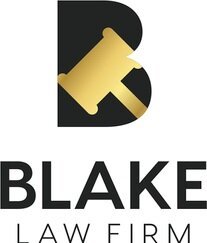CALIFORNIA RESIDENTIAL RENT CONTROL – WHAT IS THE COSTA HAWKINS ACT?
Beginning in the 1970s, residential rental units were not keeping up with demand in the more populated cities in California, leading to the passage of local rent control laws in certain cities. Local rent control ordinances have long been held to be a valid exercise of a city’s “police power” to regulate the health and safety of their residents under California law, but by 1995, five California cities (Berkeley, Santa Monica, Cotati, East Palo Alto and West Hollywood) had “strict” rent control ordinances (i.e., “vacancy control”) which severely limited a landlord’s ability to raise rent had become the norm. With similar legislation being discussed for San Francisco in 1995, California state legislators took action to protect both renters and landlords from drastic over-reaching rent control policies.
In February of 1995, two housing bills that would eventually become the Costa Hawkins Rental Housing Act were presented to the California legislature. State Assembly member Phil Hawkins introduced AB 1164. This assembly bill initially aimed to streamline the state housing law and delete obsolete statutes. Also, State Senator Jim Costa introduced SB 1257, a senate bill that contained the kernel provisions of what would later become the Costa Hawkins Act. Eventually, Assembly Bill 1164 was amended to include much of the language of SB 1257, and along with co-author Jim Costa, became known as the Costa Hawkins Rental Housing Act. After some fine tuning, the Costa Hawkins Act as it exists today essentially exempts certain kinds of residential rental units from rent control ordinances and permits landlords to reset the rental rate on rent-controlled rental units when they become vacant or where the last rent-controlled tenant no longer permanently resides at the unit (including if the tenants moves and leaves behind subtenants).
The Costa-Hawkins Rental Housing Act (Cal. Civ., §1954.50, et seq.) prohibits vacancy control and exempts certain kinds of units – e.g., new construction, single units with separately alienable title, like single-family houses and condos – from rent control (such as where the residence is less than 15 years old or owned by a Real Estate Investment Trust (REIT), among other exceptions.) The legislature considered the Costa-Hawkins Act to be a moderate approach to the extreme vacancy control being exercised at the local level, which it found to unfairly interfere with the free market and disincentivize the building of new residential construction. The bill’s aim is to facilitate local rent control where needed while also encouraging the development of new rental units.
The Costa-Hawkins Act is not easily interpreted and there is little case law to provide guidance, which leads to frequent landlord-tenant disputes. If you need help with rental control issues or have questions regarding whether the Costa Hawkins Act applies to your particular circumstances, please contract our office and we would be more than happy to discuss your situation with you.
The information provided above does not, and is not intended to, constitute legal advice. All information, content, and materials are for general informational purposes only and do not create an attorney-client relationship. The experienced and knowledgeable attorneys at Blake Law Firm are available to answer your questions and help you navigate your real property issues.



